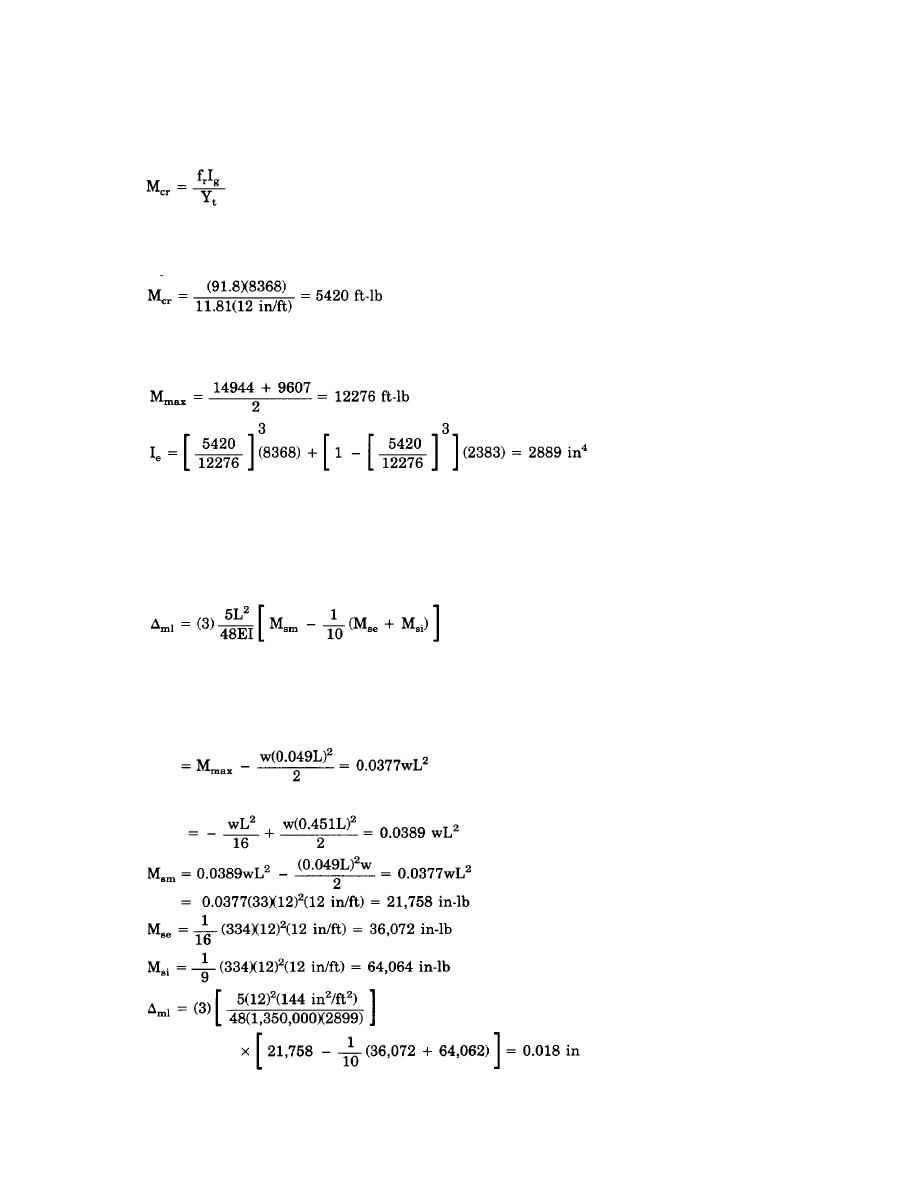
TM 5-809-3/NAVFAC DM-2.9/AFM 88-3, Chap. 3
Deflection Check.
(a) The effective moment of inertia, Ie, is determined as follows:
Ie = (Mcr/Mmax)3Ig + [1 - (Mcr/Mmax) 3]Icr
Where:
f r =2.5%f'm + 2.5%1350 lb/in2 = 91.8 lb/in2
And;
Ig = (7. 62)(23.62)3/12 = 8368 in4
Yt = 23.62/2 = 11.81 in
Icr = The moment of inertia of the cracked section, in4
Icr = 2,393 in4 (From table C-9)
Mmax = The maximum applied moment, ft-lb. (Use the average of the maximum negative moment,
Msi, and the maximum positive moment, Msi, in computing Ie.
Ie = 2899in4 < Ig == 8368 in4; Therefore use Ie in the deflection equations.
(b) The maximum total lintel deflection, )mt, occurs when both spans are loaded with the uniform
dead load and one span is loaded with the uniform live load and is determined as follows:
)mt = )ms + (3)()ml)
Since the long term dead load deflection, )ml, is increased by a factor of 3, the dead and live load deflections
will be determined separately.
(c) Determine the long term (dead load) deflection, )ml, as follows:
Note. This equation was derived using the conjugate beam method and is the general expression for the elastic
mid-span deflection for a uniformly loaded span with unequal end moments. The shear and moment diagrams
for the load case that produces maximum dead load deflection are shown in figure 8-8.
Where:
Msm =The positive moment at mid-span, ft-lb
And;
Mmax = The maximum positive moment in the span, ft-lb
8-12


 Previous Page
Previous Page
